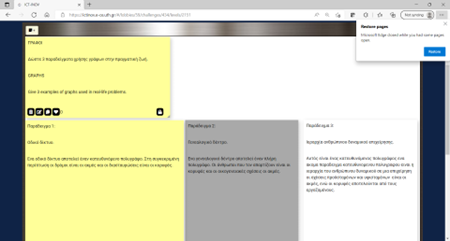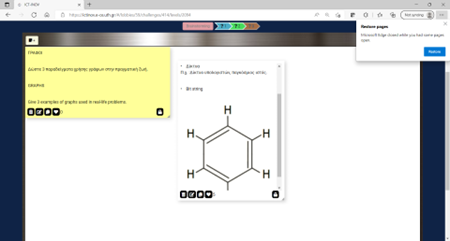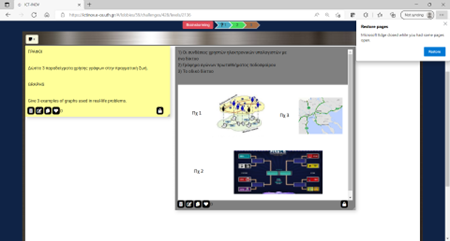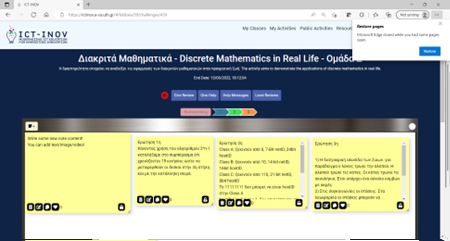
Description of the course
The course focuses on discrete mathematics with applications in Computer Science and Engineering. While the subject of discrete mathematics is very wide and applicable in a broad range of engineering, science, and other principles, this course focuses mainly on elements that are applicable in subjects of Computer Science and Engineering curricula. The course addresses logical expressions, algorithm growth, induction, graphs, trees, sets, functions, and numbering techniques. These have applications in areas such as programming, algorithms, networks, performance, and other areas. The course is heavily problem-based, challenging students to introduce solutions and to build their critical thinking abilities.
Description of the participants
This is a mandatory 1st year course in the Department of Electrical and Computer Engineering of the University of Thessaly. It is attended by 180 individuals each academic year.
Description of gamified design thinking activities
A learning activity that promotes collaboration in problem-solving contexts was designed for the course and used in the 2021 – 2022 academic year. Students worked in 30 teams of up to 6 individuals. The activity included 3 steps, each challenging teams to address relatively long challenges that are more appropriate as projects rather than exam questions. The activity included the following steps:
Step 1: Introduce a solution to the Tower of Hanoi problem.
This is a classic Computer Science problem that asks students to move disks of increasing diameters from one pole to another using a 3rd pole for support. The problem has one rule, that no larger disk may be place over a smaller disk. Students need to calculate the number of moves necessary for moving a specific number of disks. Students were asked to perform the activity as a group, building creative thinking, problem solving, and critical thinking skills inherent in design thinking.
Step 2: Count available internet addresses.
This is a numbering problem directly related to the real world. Students are asked to count all available IP addresses under the IPv4 protocol. The exercise helps students reflect on the actual implementation of networks. Students were asked to perform the activity in groups in order to apply mathematical skills in practical activities inspired by real life, establishing associations between classic problem solving and the world of work.
Step 3: Describe applications of graphs in engineering and everyday life.
This activity challenges students to consider different aspects of everyday life in which graphs are applicable for introducing solutions, such as communications, road networks, computer networks, biology, chemistry, friendship maps, influence maps, static analysis of software programs, and more. This activity challenged students to reflect on how mathematics is embedded in real-life. It further encouraged them to be creative in identifying links between theory and practice of networks.
Each team collaborated to introduce solutions to the challenges, using the ICT-INOV platform to foster communication. The projects demonstrate how the platform supported teamwork through the publication of text, images, and even scanned handwritten solutions.




